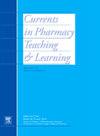逻辑回归建模:方法论见解和路线图
IF 1.4
Q3 EDUCATION, SCIENTIFIC DISCIPLINES
引用次数: 0
摘要
问题逻辑回归通常用于临床和教育研究,以检查危险因素和二元结果之间的关系。然而,药学研究人员在选择合适的预测因子、验证模型假设、解释结果和透明地报告发现方面可能会遇到挑战。方法学指南本方法学综述提出了进行逻辑回归的结构化路线图,涵盖了定义二元结果、选择和编码预测因子、检查假设、拟合模型和评估模型诊断等关键步骤。为了说明实践中的路线图,我们借鉴了两项已发表的研究:OMICU研究评估了危重患者的阿片类药物使用和处方结果,以及Spivey等人确定了药学专业学生学术成果的预测因素。此外,使用模拟药学教育数据集的详细操作示例进一步演示了模型的构建和解释,并附有STATA代码以支持可重复性。该手稿还包括对常用软件平台的比较,包括STATA、R和SAS,强调了它们在逻辑回归背景下的相关性、功能和可用性。该手稿强调了协变量选择,探索性数据分析和使用逐步和LASSO回归等先进技术的模型开发的最佳实践。还提供了关于比值比和置信区间的解释、稀疏事件和连续变量的处理、模型性能评估和透明报告的指导。本文章由计算机程序翻译,如有差异,请以英文原文为准。
Logistic regression modeling: methodological insights and roadmap
Issue
Logistic regression is commonly utilized in clinical and educational research to examine relationships between risk factors and binary outcomes. However, pharmacy researchers may encounter challenges in selecting appropriate predictors, verifying model assumptions, interpreting results, and reporting findings transparently.
Methodological guidance
This methodology review presents a structured roadmap for conducting logistic regression, covering key steps such as defining the binary outcome, selecting and coding predictors, checking assumptions, fitting the model, and evaluating model diagnostics.
Applications
To illustrate the roadmap in practice, we draw on two published studies: the OMICU study, which evaluated opioid use and prescribing outcomes in critically ill patients, and Spivey et al., which identified predictors of academic outcomes in pharmacy students. Additionally, a detailed how-to example using a simulated pharmacy education dataset further demonstrates model construction and interpretation, accompanied by STATA code to support reproducibility. The manuscript also includes a comparison of common software platforms, including STATA, R, and SAS, highlighting their relevance, functionality, and usability in the context of logistic regression.
Recommendations
The manuscript highlights best practices in covariate selection, exploratory data analysis, and model development using advanced techniques such as stepwise and LASSO regression. Guidance is also provided on the interpretation of odds ratios and confidence intervals, handling of sparse events and continuous variables, model performance evaluation, and transparent reporting.
求助全文
通过发布文献求助,成功后即可免费获取论文全文。
去求助
来源期刊

Currents in Pharmacy Teaching and Learning
EDUCATION, SCIENTIFIC DISCIPLINES-
CiteScore
2.10
自引率
16.70%
发文量
192
 求助内容:
求助内容: 应助结果提醒方式:
应助结果提醒方式:


